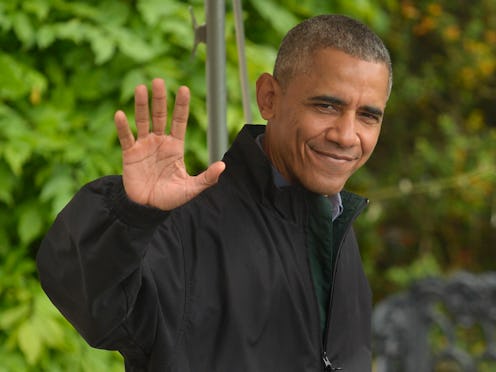News
Obama Is Popular Now, And Here's What That Means
According to opinion polls, neither Hillary Clinton and Donald Trump are terribly well-liked by the American people at large. But you know who you is? President Obama. Amidst the chaos of the presidential primaries, Obama’s popularity has steadily been ticking upward since the beginning of the year, and it now stands at a healthy 52-43, according to Gallup. It’s rare for a president to have majority support at this point in their second term, and if history is any guide, Obama’s high popularity bodes well for Clinton's chances of winning in November.
Identifying trends in presidential elections is difficult, simply because the sample size is very small. But still, there’s a strong correlation between the popularity of the incumbent president and chances that the incumbent party’s nominee will win the popular vote in the next election.
Since 1928, there have been six “open-seat” elections, in which the incumbent president wasn’t on the ballot. In three of them, the president’s approval rating was below 50 percent just before the election, and in all of those cases, the incumbent party's candidate lost. In the other three cases, the incumbent president's ratings were above 50 percent, and the incumbent party candidate won the popular vote in two of those three elections.
It’s not a rock-solid correlation. Also, it has to be noted that of all the presidents who served more than one term, only Dwight D. Eisenhower and Bill Clinton had approval ratings above 50 percent at this point in their presidencies — yet both were succeeded by members of the opposite party. But the elections of 1960 and 2000 were amongst the closest in U.S. history, and many people still believe that one or both of them were stolen.
There’s no single obvious explanation for Obama’s spike in popularity, but the fact that the economy is doing well (unemployment fell to pre-recession numbers this year) seems like a likely factor. It's also possible that the ugly, dirty, divisive primary campaigns in both the GOP and Democratic parties have made Obama appear relatively capable and even-keeled by comparison.
Favorability ratings aren’t everything, and even if they were, Obama’s numbers could easily dip back down to sub-50 percent levels between now and the election. It’s also possible that once Obama begins campaigning for the Democratic nominee, he’ll be perceived as more partisan and become less popular. But as it stands now, Obama’s favorability numbers are anomalously high, and that’s nothing but good news for Clinton.
